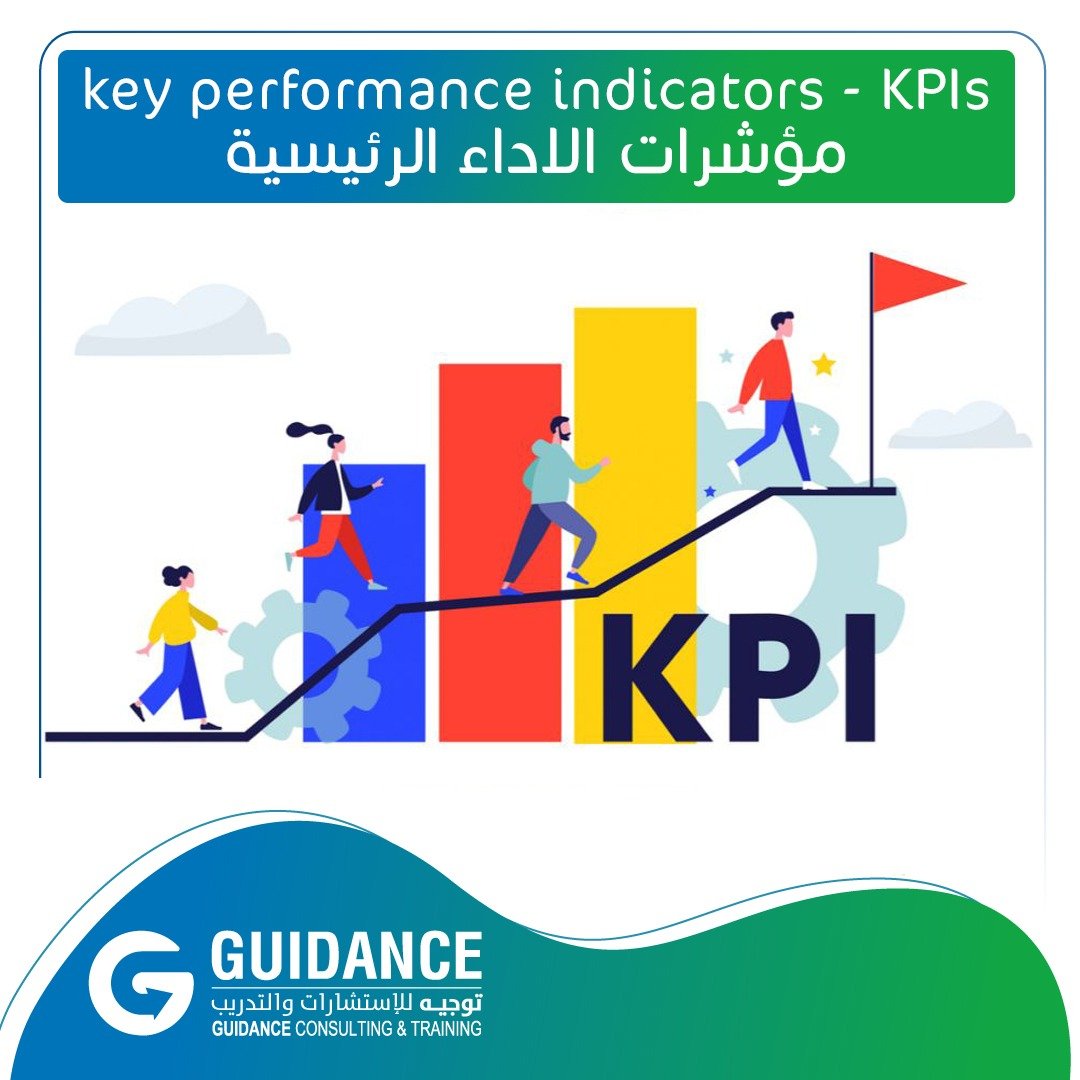KPIs
From time to time, companies need to know how well they are achieving their strategic goals. “KPIs” are the best way to assure you that you are on the right track. KPIs are an effective tool for realizing whether you have achieved the desired results. There is a large group of KPIs and we will learn more about them through this article.
A simple example of KPIs: Selling 1,000 apples during the month is considered a successful business for your company. If you sell 250 apples per week, you have achieved your goal. Your goal is achieved If you sell 1,000 apples within three days. To ensure you are on the right track, check your sales periodically. If your sales reach 550 apples after two weeks, continue, you are doing great.
What are KPIs?
KPIs can be defined as a set of measurable values, their primary use is to ensure that your organization or company is achieving success and following the right paths towards achieving goals.
In businesses, KPIs are high-performance indicators, and through performance indicators, the situation is evaluated to see the extent of the success achieved by the company with all its employees. For example, the company achieved revenues estimated at one million dollars in the “fiscal year” but if you delve deeper into KPI goals related to each department or individual, this indicator is not suitable for measuring that.
What makes KPIs good?
A good KPI has a basic set of qualities, the most important of which is that it is realistic and direct, in addition to being easy in terms of the way it is measured. You have to make sure that the KPIs have these characteristics. KPIs should have a direct relationship with the company’s strategy.
Successful KPIs are relevant to the business
If your company’s primary goal is to increase revenue by 20% by the end of the fiscal year, the KPI will be the actual increase in revenue, which is a high-level KPI.
The sales team performance is measured by sales KPIs, which could be a 50% increase in the target audience, a low-level KPI.
Successful KPIs are actionable
KPIs are actionable, so when you’re setting KPIs, you should identify the most important steps you need to take to achieve each goal. There’s no point in formulating KPIs to evaluate the situation if they’re not achievable or actionable.
If your primary goal is to increase customer retention, you need a solid plan to do it right. This can be done by moving customers from potential customers to active customers, and this is done by having your customer service team bring in 50% or more customers.
Successful Key Performance Objectives Are “Realistic”
To achieve effective and successful KPIs, you need to focus on making them realistic. Many KPIs look great on paper but are difficult to implement, so ensure their high realism.
Successful KPIs are “Measurable”
Successful KPIs should be measurable. To do this, you need to ask your team basic questions: what is the primary goal that should be achieved, and what is the timeline for achieving those goals? If you want to track your KPIs, you can use Google Analytics, the essential tool for following production indicators.
What is the difference between KPIs and Metrics?
Through KPIs, the performance of the business is measured, whether it is the company’s performance or not. While metrics express everything that can be measured, we can explain the difference between them more through the following:
What are the types of performance metrics?
There is more than one type of performance metric, the most important of which are the following:
- Key Result Indicators (KRIs)
- Result Indicators (RIs)
- Performance Indicators (PIs)
- Key Performance Indicators (KPIs)
What are the types of KPIs?
As for performance indicators, they also have types, the most important of which are the following:
- Quantitative indicators
- Practical indicators
- Directional indicators
- Actionable indicators
How do you set performance indicators for your team and company?
After you have learned the basic concept of KPI, you must know how to prepare basic performance metrics. At first, performance indicators should be unique and appropriate to your business, when you start defining key performance goals, you must consider the business information.
We will enable you to formulate basic performance metrics correctly by explaining two examples of a KPI (one is good and the other is bad), if you study the two examples in detail, you can formulate your company’s performance indicator correctly.
Bad KPI example: Making a lot of money at the end of the year
This indicator is bad because it is never specified, how much money should you make? Should you make $10,000 or more than a million dollars? This goal is also not measurable, your company will certainly make profits, but you should determine the number that will be classified as truly profitable.
Good KPI example: Your company makes an increase in profits of “$25,000” within two months
This is a good indicator because the amount that should be increased in the company’s profits has been specified, and the period during which that amount should be increased has also been defined, the goal is achievable and can be tracked and measured using the Google Analytics tool.
We conclude from analyzing both the primary and secondary objectives that to prepare a KPI strategy, and to write it correctly, you must first determine all the goals that you want to achieve with your work team, and then you must start planning to achieve those objectives by developing a solid plan.
How do you determine KPIs?
To be able to define KPIs, you need to ask basic questions. We will take an example of determining one of the KPIs, and we will explain these questions through the following table:
| Question | Answer |
| What is the desired result that your company wants to achieve? | Increase revenue by 20% this year |
| Why is this desired result important? | The business will become more profitable |
| How can you measure the percentage of achieving this result? | Increase in monthly revenue measured in dollars |
| How can you influence this result? | By encouraging expansion for existing customers and promoting cooperation between marketing and sales |
| Who is responsible for the company’s business results? | Sales Manager |
| How will you know that you have achieved your goal? | Revenue will increase by 20 |
| How often will you review progress toward the result? | Monthly |
How to use KPIs to boost companies?
There is more than one type of company, for small companies, you should focus on specific indicators, the most important of which are “revenue growth rate” in addition to “Growth profit margin” to be able to choose the appropriate KPIs for you and to determine the indicator for your company, you must define the most important elements that you want to measure, and after you finish defining the performance indicators, you must start developing a strategic plan and setting basic goals to achieve those indicators.
How do you set smart goals for companies?
Smart goals are an essential and guaranteed way to obtain high-level KPIs. They are specific, can be measured, and easily achievable. One of their most important characteristics is that they are directly related to the business activity.
Examples of KPIs
After we have explained the concept of KPIs and the effective way to formulate key performance objectives, it is time to give you a set of examples of KPIs, the most important are the following:
Growth profit margin
It is one of the most prominent indicators of the company’s performance. Through this, the company’s financial health is verified. To calculate the growth profit margin correctly, you must calculate the cost of total revenues, subtract the cost of goods sold, and then divide the number by the total revenues. If the percentage is high, this indicates the quality of the KPIs.
Cash flow forecasting
Through this, you can anticipate any problem your company faces. Examples of these problems include shortages or surpluses. To calculate this indicator correctly, you can calculate the revenues in addition to the expected returns and you must subtract the costs or expenses from this number. This indicator can be annual, weekly, or monthly.
Revenue Growth Rate
You should use the revenue growth rate to know how quickly your company grows. This indicator is considered one of the most important KPIs because of its usage in the company’s trend prediction. Through the revenue rate, the comparison is made between the revenues of two different periods.
Using the SMART framework to determine the company’s KPIs
If you want to measure the company’s KPIs, you can use more than one method, and the most important of these methods is the SMART framework, you may be wondering now what the SMART framework is, these letters were not written in vain, but rather they are an abbreviation for the basic words, these words are as follows:
Specific, Measure, Attainable, Relevant, Timeframe = SMART.
- Is the company’s goal specific?
- Is your goal measurable?
- Is the goal you formulated realistic?
- Is the goal directly related to the business activity?
- Is the goal set by a specific time frame for achieving it?
You should ask your company and your team these basic questions, to be able to evaluate and determine your organization’s KPIs.
From time to time, companies need to know the extent to which they are achieving strategic goals. The KPIs are the best way to assure you that you are on the right track, and KPIs are an effective tool to know whether you have achieved the desired results, there is a large group of KPIs and we will learn more about them through this article.
A simple example of performance indicators, evaluating the situation, selling 1000 apples during the month is considered a successful business for your company. If you sell 250 apples per week you have achieved your goal, and if you sell 1000 apples in three days you have achieved your goal, and to be able to make sure that you are on the right track; You have to check your sales volume every periodically, if your sales reach 550 apples after two weeks, continue! You are doing a good job.
Guidance for Consulting and Training
We have the knowledge and experience to help institutions and individuals comply with the requirements of the Saudi Standards and Quality Organization, the Food and Drug Authority, and other entities that impose legal and mandatory requirements in the Saudi market.
To qualify your facility, train its personnel to fulfill the documents required to implement the institutional systems and apply the key performance indicators needed.


